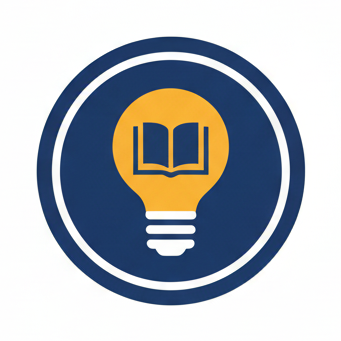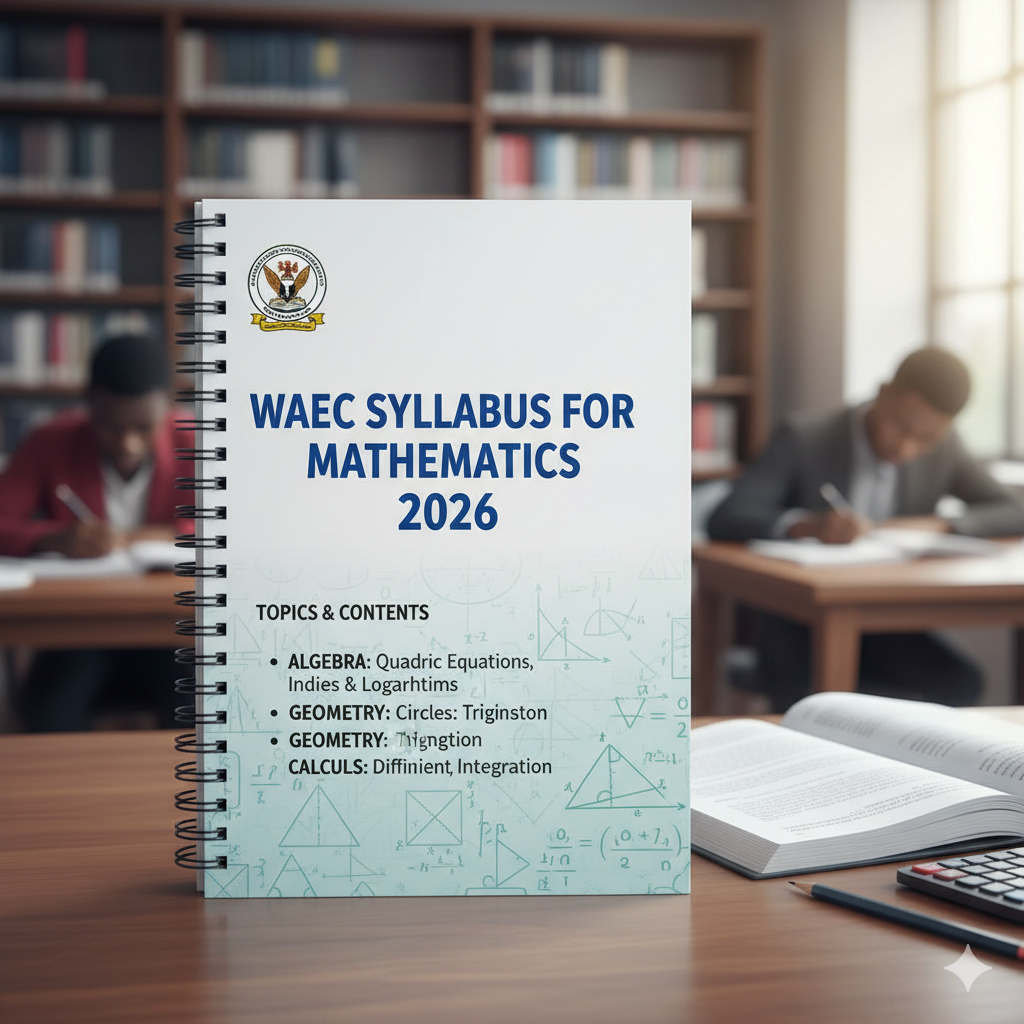If you’re planning to write WAEC next year, then the WAEC syllabus for Mathematics 2026 is one of the most important things you need to get familiar with. It shows you exactly what WAEC expects you to know, the topics you’ll meet in the exam, and the areas you should focus on while studying.
A lot of students fail Maths not because they are not smart, but because they study blindly. With the right syllabus, you can study smarter, not harder.
Let’s break everything down clearly.
What is WAEC Mathematics 2026 Syllabus
The WAEC syllabus for Mathematics 2026 is basically a list of all the topics WAEC uses to set questions. If you understand these topics well, the exam becomes far easier. No surprises, No confusion. Just predictable areas that you can confidently prepare for.
Why You Need the WAEC Maths Syllabus
Here’s why the syllabus is so valuable:
- It tells you what WAEC will set questions from
- It helps you avoid irrelevant topics
- It guides your reading so you don’t waste time
- It gives you confidence because you know what to expect
- It helps you track your progress while studying
In short, using the syllabus is one of the smartest things you can do.
Topics in the WAEC Syllabus for Mathematics 2026
Below are the major areas WAEC wants every candidate to understand. Don’t worry, once you break them down and practice consistently, they become much easier.
1. Number and Numeration
This includes everything from basic number operations to more advanced concepts like:
- Whole numbers
- Fractions and decimals
- Percentages
- Ratios and proportions
- Indices and logarithms
- Approximation and estimation
- Square roots and cube roots
- Direct, inverse, and joint variation
These are the foundation topics that WAEC loves.
2. Algebra
Algebra scares many students, but WAEC repeats most of these topics yearly:
- Simple and compound algebraic expressions
- Linear equations and simultaneous equations
- Word problems
- Quadratic equations
- Inequalities
- Graphs and functions
- Arithmetic and geometric progressions
With enough practice, this section becomes one of the easiest.
3. Geometry and Mensuration
This part deals with shapes, angles, and measurements:
- Lines and angles
- Triangles and quadrilaterals
- Circles and theorems
- Geometrical construction
- Loci
- Trigonometry
- Perimeters, areas, and volumes of solids
- Pythagoras’ theorem
These topics always appear in Paper 2 (Theory).
4. Statistics and Probability
You’ll learn how to:
- Collect and organize data
- Draw and interpret graphs
- Calculate mean, median, and mode
- Work with cumulative frequency curves
- Solve basic probability questions
This area is usually very scoring if you understand it well.
5. Vectors and Transformations
Here WAEC tests your ability to:
- Add and subtract vectors
- Use position vectors
- Apply reflections, rotations, translations, and enlargements
- Use simple matrices for transformations
Most students find this interesting once they get the hang of it.
6. Everyday Mathematics
This is where Maths connects with real-life situations:
- Profit, loss, and discount
- Simple and compound interest
- Taxes
- Growth rate
- Household and business calculations
WAEC always includes practical questions from this section.
WAEC Mathematics 2026 Exam Format
Understanding how the exam works will help you prepare better.
Paper 1 – Objective (1 hour)
50 multiple-choice questions covering all the topics.
Paper 2 – Theory (2 hours 30 mins)
Section A: Compulsory questions (Answer All)
Section B: Optional questions (Eight Questions to Answer Five)
Many students forget that accuracy and neat workings are very important in the theory section.
Recommended Textbooks for WAEC Maths 2026
Here are some textbooks that explain the topics very well:
- New General Mathematics (NGM) by Channon
- Comprehensive Mathematics for SSCE
- Essential Mathematics for Senior Secondary Schools
Even if you don’t have all of them, one good textbook with past questions will help you greatly.


Leave a Reply